Ten years ago, we set out to show the world the fascinating research done by and on science museums and their collections. The aim was to bring our own research into conversation with others in museums and universities globally, by creating an Open Access, online, peer-reviewed format. Since then, we’ve published 22 issues, nearly 250 articles and have 42,000 annual readers. Here I’ve picked ten of my personal favourites to give a flavour of the incredible work authors have been up to.
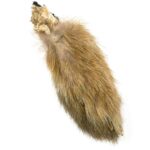
A history of amulets in ten objects, Annie Thwaite – Issue 11, Spring 2019
Always in the top three of our most popular articles, this paper delves into historical beliefs about healing and protection through an unusual set of museum objects. From hare’s feet, carried by the likes of Samuel Pepys, to a whelk shell treasured by a billingsgate porter, it seems we have, and perhaps still do, put faith in the power of objects.
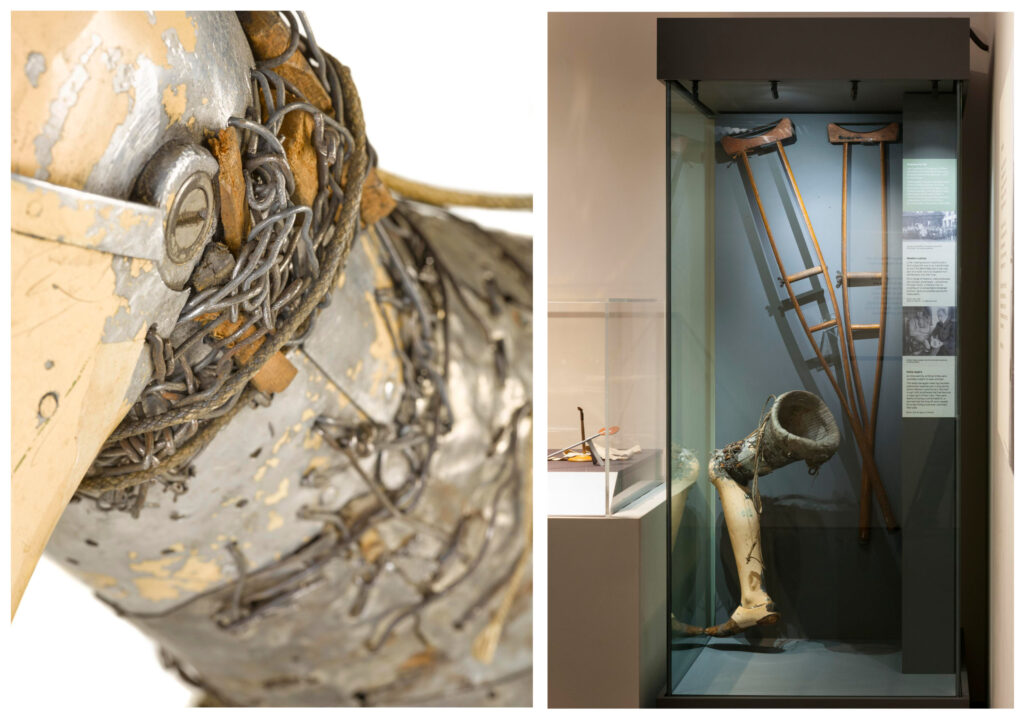
Wounded: an exhibition out of time, Stewart Emmens – Issue 13, Spring 2020
This article gives a behind-the-scenes look at how ideas and display strategies develop during research for an exhibition. The curator of Wounded (a 2018 exhibition to commemorate the centenary of the end of the First World War) describes how, as the exhibition took shape, two questions emerged – how to show ideas of time passing from the moment of wounding to living with wounds into old age. And, how to convey both the anonymous masses involved in twentieth century world conflict and the personal experience of an individual. This object provided a moving solution: it shows a standard issue prosthesis layered with years of DIY repairs by its unknown owner to keep it in use.
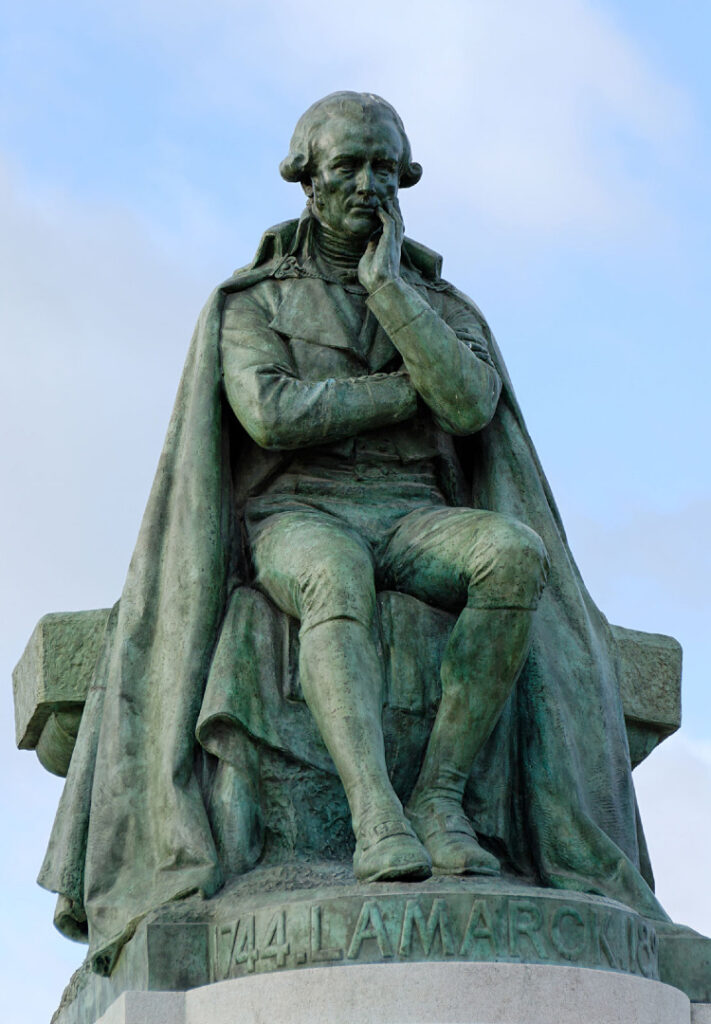
On heroism, Ludmilla Jordanova – issue 1, Spring 2014
In the first issue of the Journal, an experienced academic raised a significant theme that links the fields of museums and academic studies: how do we avoid the uncritical use of ideas of heroism when it’s already around in histories of science and science museums need ‘celebrity’ people and blockbuster themes to attract audiences?
This article argues that museums need to avoid a heroism that glosses over the human failings of celebrity scientists and relegates other more ordinary people and stories to the background. It’s an idea that Simon Schaffer returned to in the next issue (Chronometers, charts, charisma: on histories of longitude, Issue 2, Autumn 2014) and which appears again in Gemma Almond’s study ‘Why the anonymous and everyday objects are important: using the Science Museum’s collections to re-write the history of vision aids’ (Spring, 2020).

Through the lens of a space tourist, Julia Tcharfas – Issue 4, Autumn 2015
One of the driving forces for research is to uncover objects and stories for major exhibitions – in this case, Cosmonauts: Birth of the Space Age at the Science Museum. Here the author reveals that while tussles over space commercialisation seem very recent, the first ‘space tourist’ was in fact an American businessman, Dennis Tito. Tito paid $20 million dollars to ‘holiday’ on the International Space Station in 2001 thanks to collaboration between NASA and the Russian space program.
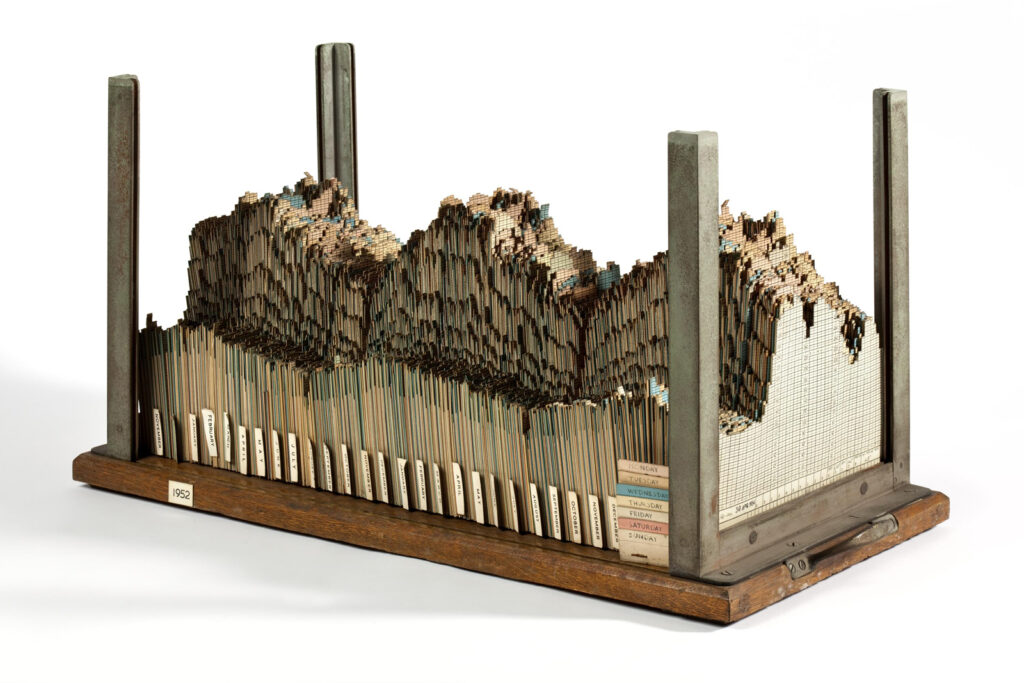
Visualising electricity demand: use and users of a 3D chart from the 1950s, Alice Cliff and Jenny Rinkinen – Issue 9, Spring 2018, Special Issue: The Material Culture of Energy
Using a close examination of an object in the collections of the Science and Industry Museum in Manchester, the authors of this article investigate what this object was for, how it was used and what it says about the history of energy use.
The article forms part of the Journal’s first special issue, on ‘The Material Culture of Energy’ (guest edited by historian Frank Trentmann) which drew together international authors from museums and universities. For me, this thematic approach delivers more than the sum of its parts, bringing different perspectives and disciplines to a topic. It’s a model we’ve built on again, for example in a special issue on Sound and Vision in 2017, and on the Congruence Engine research project (which looked at using machine learning to connect museum objects and data) in 2022.
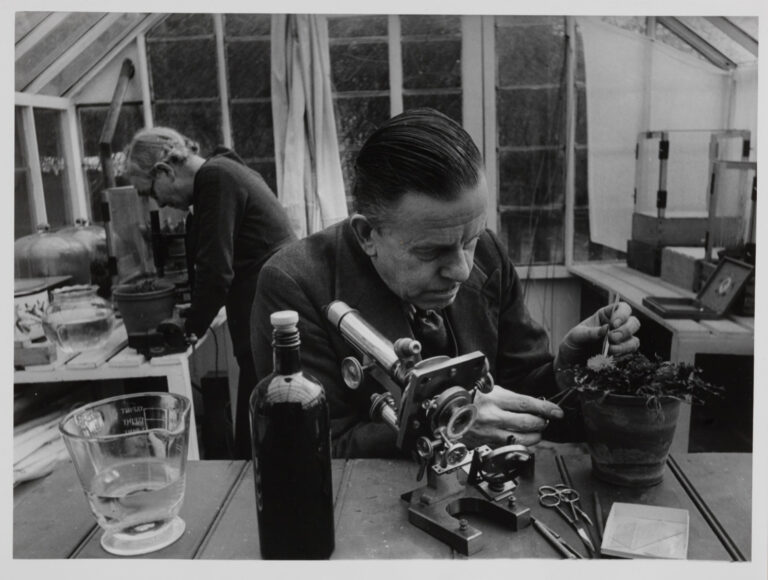
Tinkering with nature: craft, domesticity and female labour in F Percy Smith’s ‘Data’ notebooks (1925–1944), Max Long – Issue 20, Autumn 2023
Many studies over the last decade have highlighted the contribution of women to science (so often erased from the histories). This example looks at two notebooks that belonged to F Percy Smith, one of the first scientific filmmakers. Labelled ‘Data A’ and Data B’ the notebooks show the craft and working processes of the last two decades of Smith’s life – between 1925 and 1945. But the notebooks also reveal, for the first time, the role that two women played in Smith’s studio-laboratory: his wife, Kate Smith, and his assistant, Phyllis Bolté, dismantling the long-held belief that Percy Smith worked entirely alone.
Other articles on the contribution of women to science include:
The life and material culture of Hertha Marks Ayrton (1854-1923): suffragette, physicist, mathematician and inventor by Elizabeth Bruton
Inventor, devoted daughter, or lover? Uncovering the life and work of Victorian naval engineer Henrietta Vansittart (1833–1883) by Emily Rees Koerner
Wired-up in white organdie: framing women’s scientific labour at the Burden Neurological Institute by David Saunders
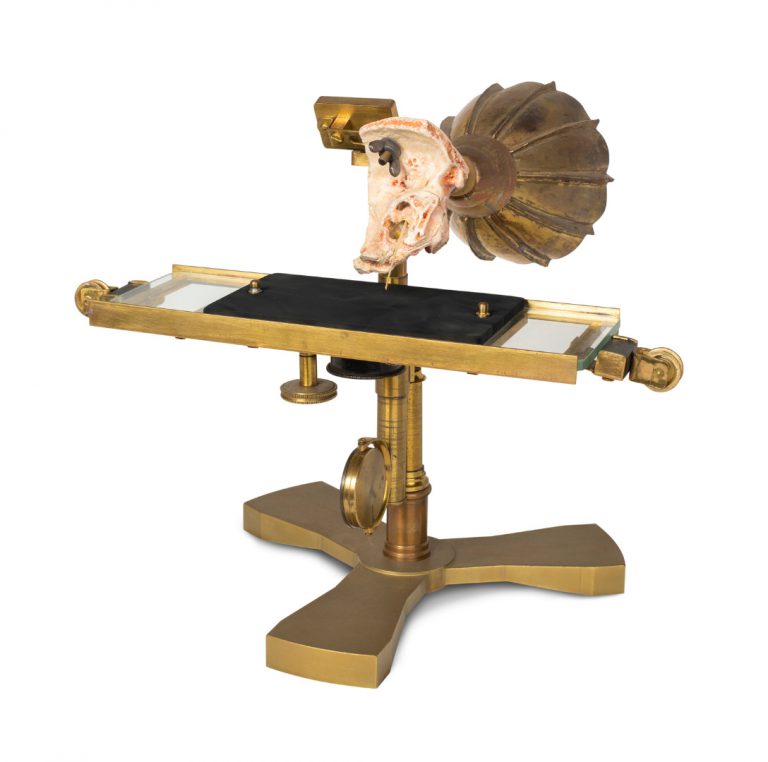
Writing sound with a human ear: reconstructing Bell and Blake’s 1874 ear phonautograph, Tom Everett – issue 12, 2019
Some history of science research is impossible to do with just text and images and the physical objects themselves hold the clues. When the objects are lost, reconstructions offer a way to find out more.
In this award-winning article an author from the Canada Science and Technology Museum in Ottawa describes a project to reconstruct Alexander Graham Bell and Clarence J Blake’s ear phonautograph: an 1874 curiosity that used an excised human middle ear to visually inscribe sound waves. They originally thought of it as a tool for deaf education, though it became better known as the instrument that provided Bell with the technical insights he needed to develop and patent the telephone in 1876.
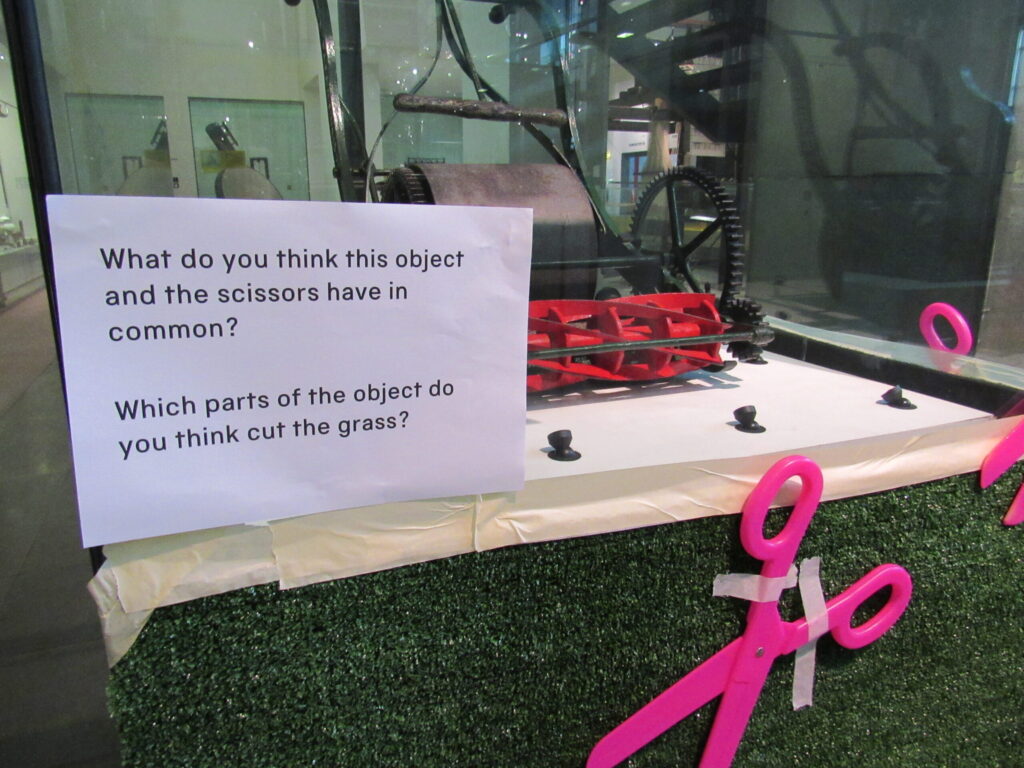
Supporting young children’s learning from science objects: the importance of play on gallery, Naomi Heywood. Karen Davies and Lauren Souter – issue 19, 2023
An important area of research in museums is visitor research, which studies how to engage different audiences with exhibitions and stories. This article shines a light on the particularly under-researched topic of how very young children experience object-rich exhibitions in science museums. The results of testing simple prototypes with families on gallery show the power of play in exhibition spaces.

Challenges of working objects, Elizabeth Pye – Issue 6, Autumn 2016
Conservation of objects is one of the most fascinating areas of museum work that rarely gets a public mention outside the profession. This article discusses an issue that science museums in particular wrestle with as they have so many objects intended to ‘’work’ or move. There is always tension between operating objects to give audiences a proper understanding of them and limiting operation because it speeds up wear and deterioration for future generations. In the end, this conservator-author argues that visitors should be allowed to handle, work and physically experience functioning objects to get a real experience of their meaning and magic.

Museums and AI – learning from artists (in Ten out of ten: A review of the last decade), Hannah Redler-Hawes – Issue 22, 2024
Research in science museums touches on contemporary issues as well as the historical. In tackling some of the huge problems affecting science and society such as climate change, digital transformations, or social justice, museum research makes an important contribution. In a review article exploring big themes of the last decade, this author looks at the rise of AI in museums and in the world and argues that artists often lead the way in exploring new challenges.